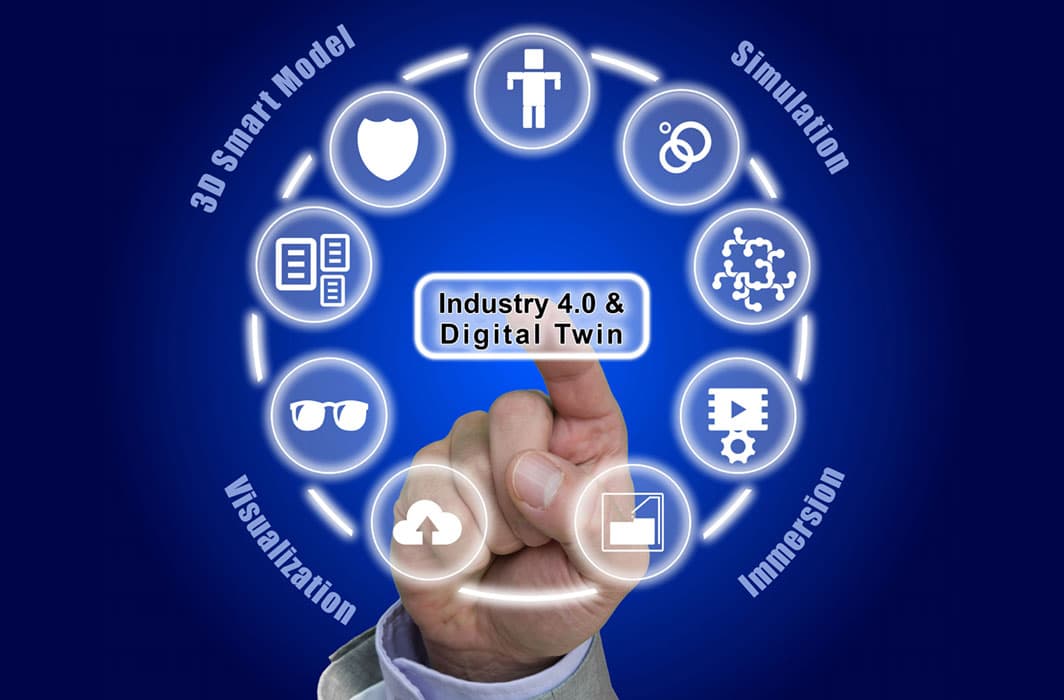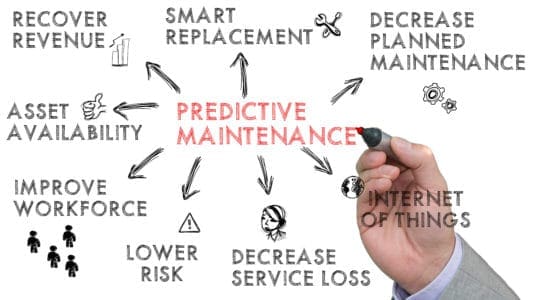The Latest industry 4.0 Developments in Manufacturing

As our world continues to push forward with technological innovation and increasing productivity, manufacturers are streamlining their production facilities and operations by embracing Industry 4.0.
Industry 4.0, in a simple sense, describes integrating technologies, such as cloud computing, analytics, the Internet of Things (IoT), machine learning, and artificial intelligence (AI) into production facilities, assembly lines, and distribution centers. As these technologies advance, their impact on manufacturing and distribution will continue to revolutionize the industry and bring a significant jump in both optimization and production capacity.
In this article, we’ll explore the latest developments with Industry 4.0 in manufacturing and dive deeper into how they improve their efficiency and throughput.
1. Increase in Industry 4.0 Technology Usage to Reduce Supply Chain Issues

With Industry 4.0 technology, companies are taking a closer look at how they can make their supply chains more resilient.
This includes implementing improved data management and data capture systems, integrated process optimization, and enhancing physical process execution through a combination of humans and machines.
Data Capture & Management
Data capture and data management can become a significant bottleneck in a supply chain if not appropriately managed. That’s why companies have begun to improve their data update frequency, data storage and capture systems, and how quickly information is sent out.
With improved data collection and management systems, organizations are able to spot supply disruptions and bottlenecks before they have a chance to spiral out of control, as well as spot subtle trends, including slowly increasing supplier lead times to get ahead of the problem.
Integrated Process Optimization
Process optimization was typically done in silos and not standardized in a way that ensured consistency and the best possible results. With integrated process optimization, companies have begun developing workflows and standards for process optimization to foster transparency and reduce potential errors or pitfalls.
2. Smart Factories

In 2020, there was an increase in manufacturers looking into digital twinning, and this implementation of digital twins is expected to continually increase for years to come.
A digital twin is essentially a virtual representation of a specific object or system, and is designed to replicate its real-world counterpart. Digital twinning has allowed manufacturers to create what are called “smart factories,” or “digital twin factories,” which are digital replicas of their physical plants and factories. Smart factories help process efficiencies by opening up more collaborative opportunities.
For example, if one company has multiple locations around the world, it’s hard for all of the employees within that company to meet together to safely collaborate on new product developments and processes. But, with smart factories, technicians and engineers around the world can meet together in this digital space to work on these new processes and products. Although time zones are still a challenge to contend with, there’s no doubt that smart factories are changing the manufacturing industry.
3. 5G, Sensor Advancements, & Predictive Maintenance

Predictive maintenance isn’t a new development in manufacturing, but 5G does expand predictive maintenance capabilities.
Predictive maintenance refers to the process of using condition-monitoring data, machine learning, analytical models, and other technologies to predict issues and eliminate the need for preventative maintenance.
5G technology and advances in sensors have allowed for significant improvements in the field of predictive maintenance. The amount of bandwidth required to operate vast arrays of sensors in an autonomous environment wasn’t possible before the advent of 5G technology. With 5G, it’s now possible for manufacturers to pull a high volume of data from multiple sensors, which in turn helps to significantly reduce production costs and improve the lifespan of equipment and machinery.
4. Edge Computing

Edge computing is defined as data that is stored and processed at the “edge” of a local network, rather than at a data center. The “edge” of a network refers to various endpoints, or edge devices, that are connected to the network core. These devices could include personal computers and WiFi access points.
The biggest advantage is that data doesn’t have to travel as far, which increases response time and reduces lag, allowing for better analytic speeds, as well as instant data analysis and processing. Edge computing also provides a better security blanket to the network core and is easily scalable for growing businesses.
Edge computing saw a dramatic rise in adoption in 2022, particularly because it allows monitoring systems in factories and plants to quickly and consistently process and collect data. Manufacturing and production plants are using both edge computing and artificial intelligence to improve quality control processes, identify safety issues or product defects, reduce waste, and more.
Prior to edge computing, many companies were implementing cloud computing. The issue with cloud computing is that the data is sometimes still being processed and stored hundreds, sometimes even thousands of miles away, which can cause latency issues and gaps in data collection. Cloud computing can also increase downtime if the cloud or network becomes unavailable. Edge computing eliminates these issues, which helps manufacturers increase process efficiency and speed.
The number of manufacturers adopting edge computing is only expected to increase in 2023. In fact, technical research and consulting company Gartner, expects the number of companies using edge computing to increase from 10% to 75% by 2025.
5. AI & Industry 5.0
 Over the past two years, you may have heard the term “Industry 5.0.” Industry 5.0 isn’t necessarily a new revolution, but rather an evolution of Industry 4.0.
Over the past two years, you may have heard the term “Industry 5.0.” Industry 5.0 isn’t necessarily a new revolution, but rather an evolution of Industry 4.0.
As you already know, the very foundation of Industry 4.0 is increasing process efficiency through machine learning, automation, and other developing smart technologies. Industry 5.0 takes that same idea, but poses the question—how are humans interacting with this technology?
At its core, Industry 5.0 is centered around humans and AI safely and efficiently co-existing in a workplace.
Digital twin factories, sensors, the Internet of Things (IoT), and digitally connected manufacturing are the fourth industrial revolution, implementing artificial intelligence (AI) and machine learning into manufacturing is Industry 5.0. When manufacturers started to implement industrial robots, many employees feared that automation itself would take their jobs away.
Industry 5.0 helps take this fear away by putting the employees back in charge. Industrial robots and cobots will continue to ensure process speed and accuracy, as well as carry out repetitive manual tasks. This leaves human workers with the responsibility of more creative tasks, like finding solutions that will help reduce waste and environmental impact of manufacturing processes.
Want to Learn More About Industry 4.0 Technologies?
Have questions about Industry 4.0 technologies? Turn to DSI. Founded in 1983, we provide world-class engineering, consulting, and program management services, as well as Industry 4.0 solutions, to clients in many industries. With a team of over 300 professionals and engineers, we can help make any project a success.
Contact us today to schedule a free consultation.